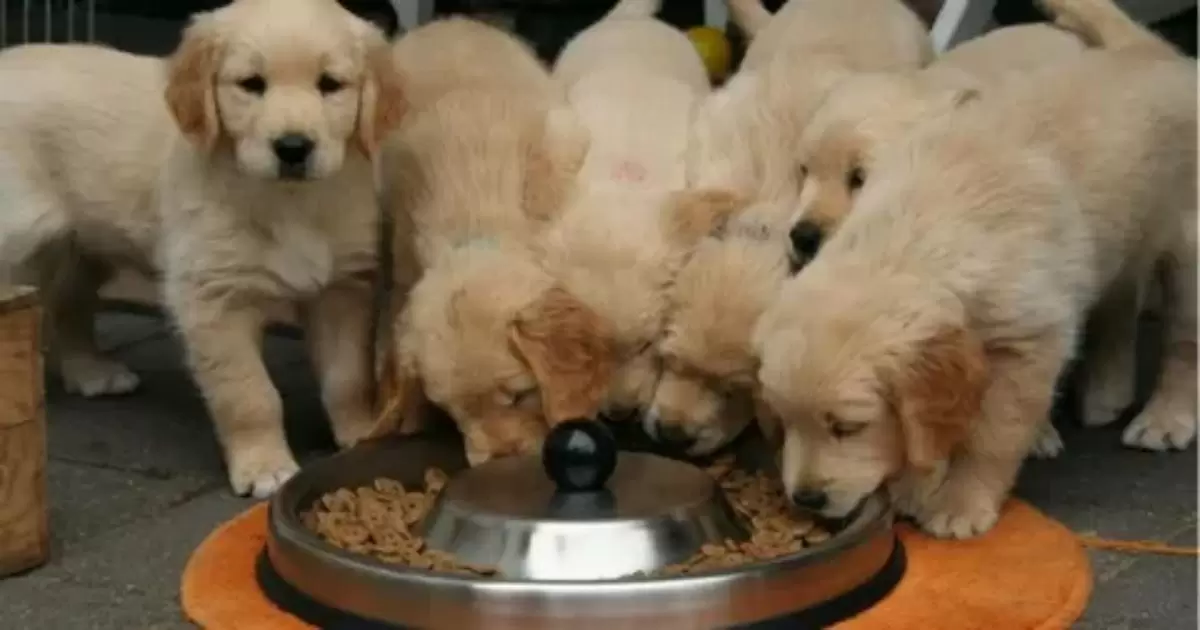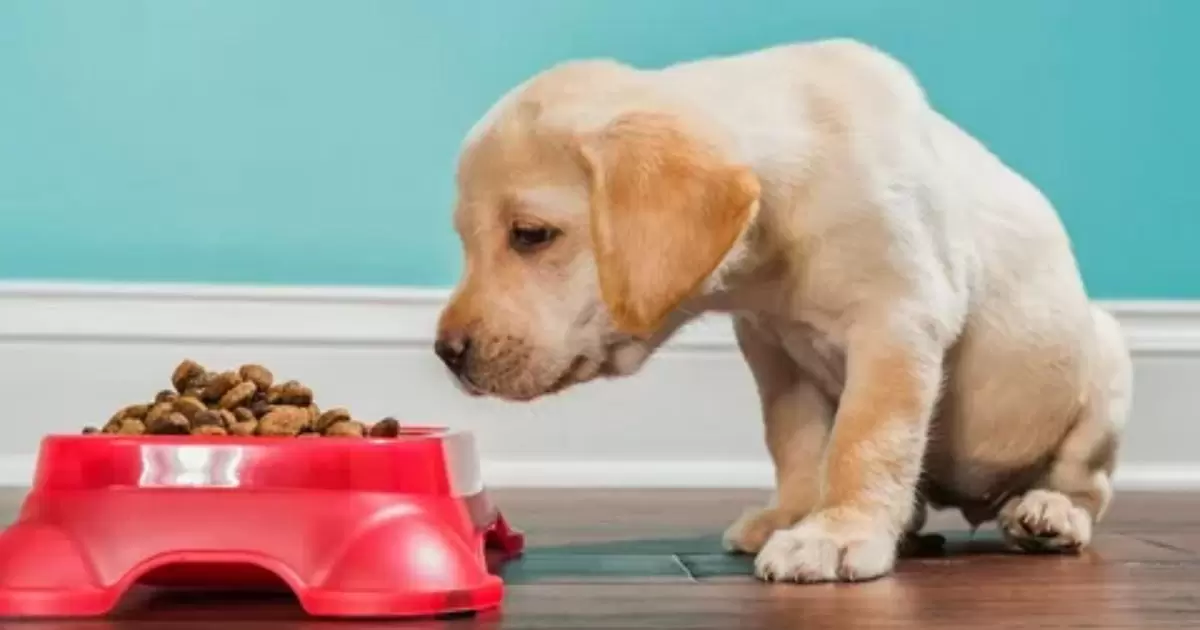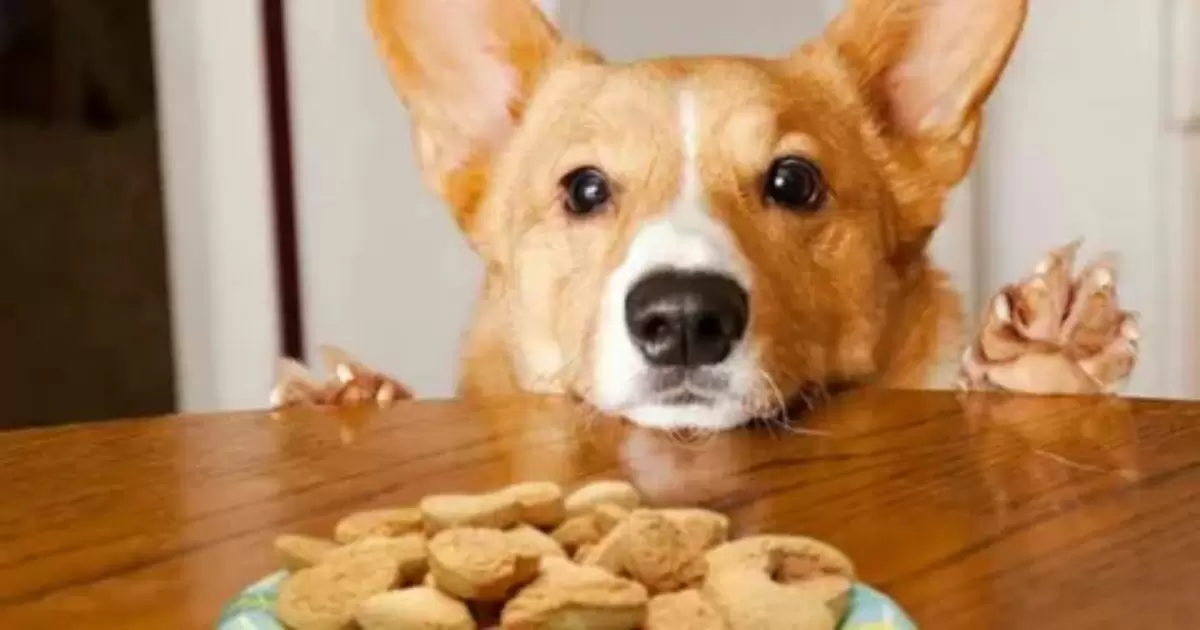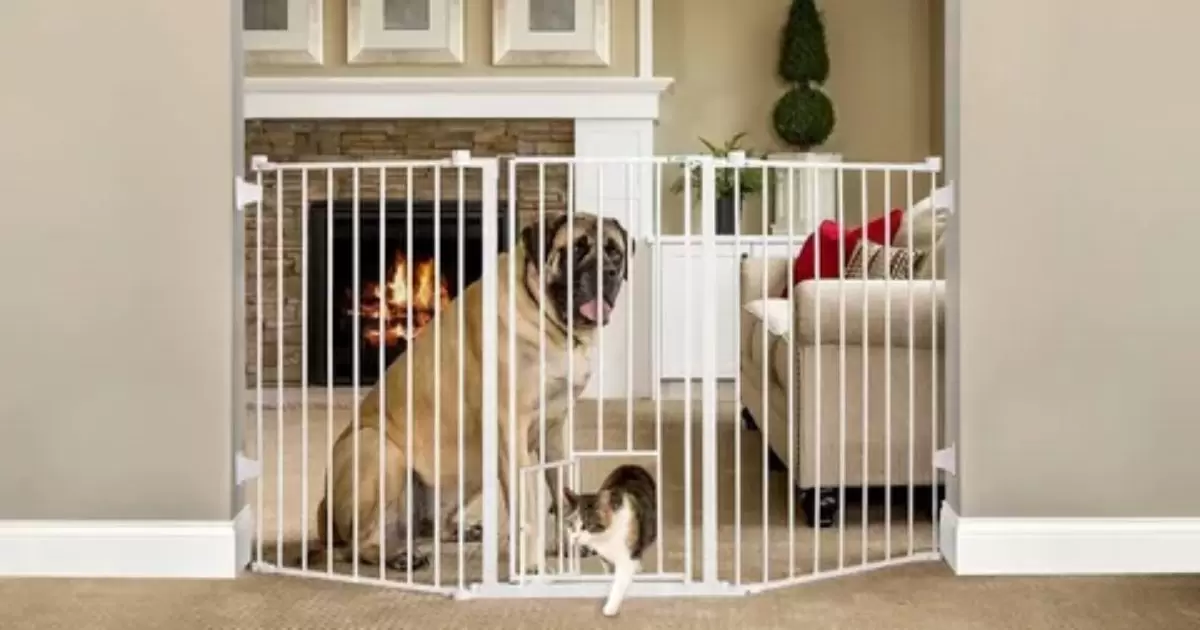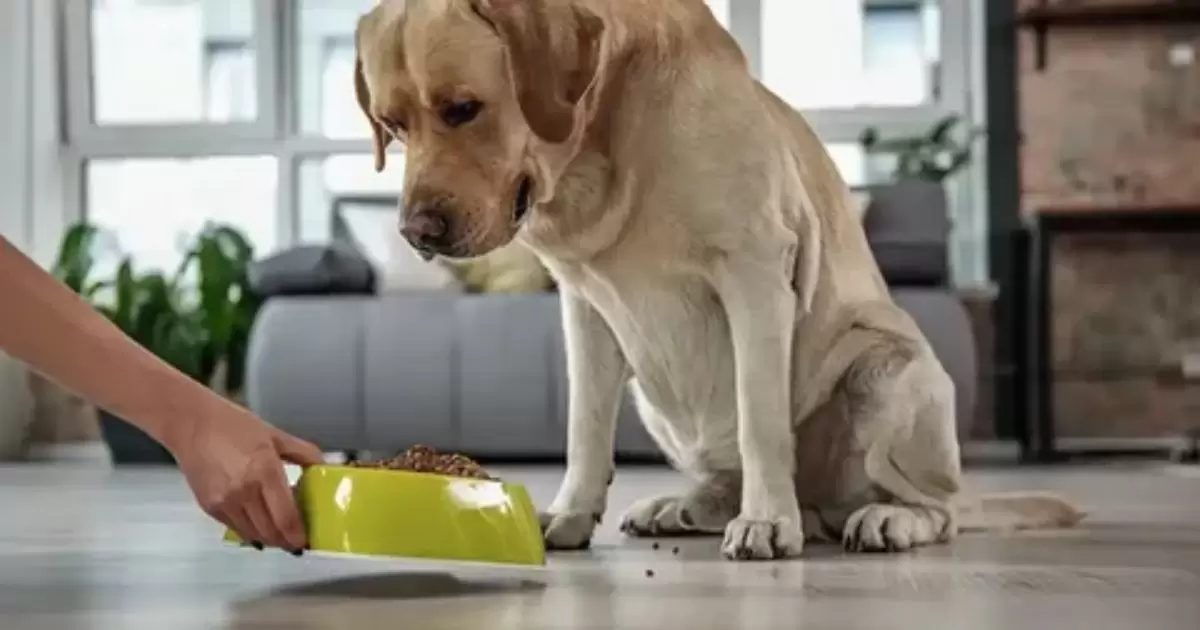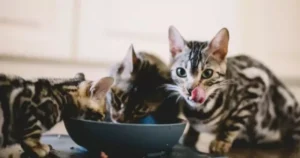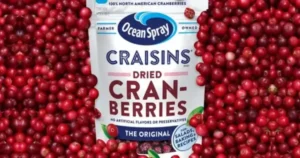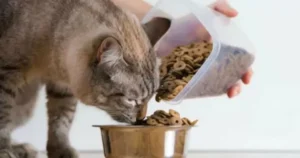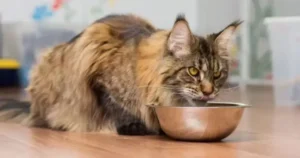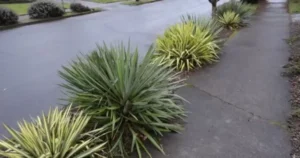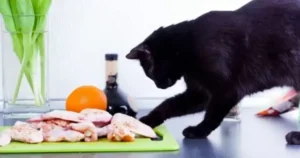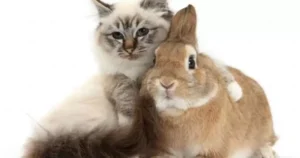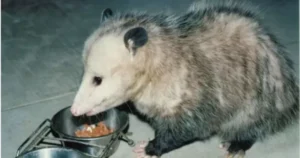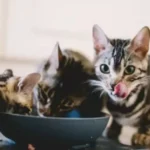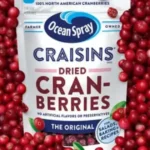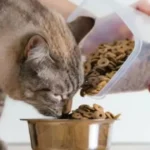Is your canine sneaking bites off the cat’s meals? This tempting addiction can lead to weight gain and different fitness problems in your puppy. But don’t worry, with some simple tips you can stop this behavior. Try feeding pets in separate rooms, using puzzle bowls, adjusting mealtimes, and more.
Uh oh, is your dog eating the kitty’s nummy food? Not good! That yummy cat food can make your pup gain weight. No fun! But do not worry, you may restore this. Try feeding them in extraordinary rooms. Use puzzle bowls too. These easy hints will keep your canine from sneaking the cat’s snacks. How To Keep Dog From Eating Cat Food? Just follow these easy tips.
Is your dog sneaking the cat’s tasty meals? This awful addiction can lead to weight benefits and other problems. But stopping it is easy with a few simple tricks. Feed pets in separate rooms, use puzzle bowls to slow your dog’s eating, adjust mealtimes so they don’t overlap, and place the cat food somewhere high up. These effortless tips will curb your dog’s cat food cravings for good.
Why Cat Foods Are Not Good For Dogs
Cat meals tend to be higher in fat and protein than dog food. Too much fat can lead to pancreatitis or other digestive upsets in dogs. The protein levels can also put a strain on dogs’ kidneys over time. Even just a few bites of cat food on occasion likely won’t cause issues, but steady stealing of kitty’s food can potentially harm dogs. So it’s important to curb this habit.
Consuming cat food can also cause nutritional imbalances in dogs. Dog foods carefully formulate protein, fat, carbs, and nutrients specifically suited for canines. Cat food lacks certain vitamins dogs need. So if a decent amount of your dog’s diet is made up of feline kibble or canned formulas, he may develop deficiencies over time.
Solutions To Stop Your Dog From Eating The Cat’s Food
There are several effective solutions for stopping dogs from dining on kitty food that you can try. One easy method is to place the cat food somewhere up high that your dog can’t access, like on a wall ledge or cat tree. You can also separate cats and dogs at mealtimes using techniques like securely gated rooms, electronic pet feeders activated by microchips, and dividing up areas of your home to create dog-free zones for cat dishes.
Additionally, try offering puzzle toys or snuffle mats loaded with dog food to your hungry pup when it’s your cat’s mealtime. This will distract your canine buddy so he doesn’t go racing for the tempting cat cuisine instead. You can also train a solid “leave it” command, which cues your dog not to touch the cat food even if it’s available. Praise and treat when he listens to reinforce ignoring forbidden food.
Replace The Food Bowl With An Automatic Selective Pet Feeder
An automatic selective pet feeder allows setting scheduled mealtimes and portions for both cats and dogs. These feeders identify pets microchipped with the owner’s contact info and are only open for that specific animal. So when it’s kitty’s breakfast, the feeder dispenses just her food, shutting the dog out.
Selective feeders take the guesswork out of coordinating separate animal feedings across one household. Allowing cats access to food without the dog gobbling their meals provides a simple solution. And monitoring feeding amounts helps inform you about unusual appetite changes signaling health issues. So selective feeders not only prevent food thievery, but they support wellness too.
Elevate The Food To Make It Unreachable To The Dog
One of the easiest ways to stop dogs from eating a cat’s food is to elevate the cat’s dishes. Place food and water bowls on a table, shelf, or cat tree the dog can’t reach. You can find commercial elevated cat feeding stations. Or create your own using surfaces already in your home for cheap and customizable options to keep cat food positively secure.
For safety, secure raised bowls so they don’t tip and spill. And include a spill-proof rim on dishes to further prevent slippage and mess. A little creativity helps devise clever, dog-proof cat-feeding setups. No extreme construction is required! Things like wall ledges or high countertops often work perfectly to lift food beyond a dog’s grasp. Height is might when outsmarting food-motivated canine thieves.
Set Up A Cat Feeding Station Where Dogs Don’t Fit
Specially designed cat feeding stations offer an enclosed, secure spot for feline dining while physically blocking dogs. The entrance and interior dimensions allow cats easy access while being too small for dogs to even stick more than their nose in.
These stations sometimes resemble little playhouses with food dishes or bowls built right in. And they come in materials like wood, metal mesh, sturdy plastics, and more. Match station style to home decor for seamless design. Place stations in low-traffic areas for minimal disruptions to comfortably eating cats. Now kitties can nibble worry-free while playful pups remain on the outside looking in.
Feed Your Pets In Separate Rooms By Setting Up A Pet Gate Or A Cat Door
An effective method to prevent dogs from accessing cat food is to separate them at mealtimes. Set up a pet gate barring entrance to the cat eating zone, like a laundry room, spare bathroom, or partitioned section of kitchen walled off just for kitty dining. This physically blocks dogs while allowing cats jump-free access to food.
You can also install a small pet door built into an interior door that’s sized just right for cats. The door’s opening only permits the smaller species entrance. So when it’s chow time, Puddles freely passes through but Fido’s left frustratingly on the wrong side of the divide! Just be sure shared spaces like bedrooms remain available to both to prevent complete isolation.
Feeding Cats in a Secure Area
When kept in a secure area while eating, cats can enjoy their food without worrying about the dog barging in. A spare bathroom or laundry room with a baby gate across the doorway allows the kitty inside but keeps the pooch out. Just be sure cats have all necessities like food, water, litter box, toys, bed, and scratching posts so they don’t feel trapped or isolated.
You can also buy furniture pieces made specifically for feeding cats in seclusion from dogs. Some options include hut-style houses, enclosed crate tables, and cabinets with interior food stations only accessible by a small cat flap. These cat-friendly spaces serve as safe meal spots free from canine food thieves. But make sure to provide pets joint playtimes and affection too for positive relationships.
Training Your Dog Not to Eat Cat Food
| Step | Description |
| 1. | Separate Feeding Areas: Feed your dog and cat in separate regions to prevent getting the right of entry to every different food. |
| 2. | Teach “Leave It”: Train your dog to “leave it” when drawing near cat meals through the use of treats and advantageous reinforcement. |
| 3. | Supervise Feedings: Supervise feeding times to ensure your dog doesn’t sneak cat food. |
| 4. | Consistent Commands: Use consistent commands like “no” or “leave it” whenever your dog attempts to eat cat food. |
| 5. | Reward Good Behavior: Reward your dog with praise and treats when they listen and ignore the cat food. |
| 6. | Remove Temptation: Keep cat food out of reach or in closed containers to remove temptation. |
| 7. | Redirect Attention: Provide interactive toys or activities to redirect your dog’s attention away from cat food. |
| 8. | Consult a Professional: If the behavior persists, consult a professional dog trainer for additional guidance. |
One helpful approach to prevent Ducks Eat from eating intended cat food is formally training them. Use positive reinforcement behavioral conditioning to teach appropriate snack rules. When your dog shows interest in the cat food but hasn’t yet eaten any, say a clear cue like “Leave it!”. Then redirect their attention to a tasty dog treat
Continue rewarding with treats and praise whenever your dog passes by cat food without touching it, despite temptation. In time, they learn to override their instincts to avoid the forbidden feline cuisine based on previous rewards earned. This trains self-control and solid obedience. Though initial constant supervision and humane corrections are part of the process, your efforts cultivate good manners!
FAQS:
How can I stop my dog from eating my cat’s food?
You can stop your dog from eating cat food by feeding them in separate rooms, using puzzle bowls, raising the cat food location, or training your dog to leave the cat food alone.
How do you keep cat food away from dogs?
You can keep cat food away from dogs by placing it somewhere elevated that the dog cannot reach, using microchip-activated selective pet feeders, or feeding cats in an enclosed space the dog cannot access.
Why does my dog keep trying to eat cat food?
Dogs keep trying to eat cat food because it has higher protein and fat content which makes it more palatable than dog food to your pet.
What happens if a dog eats cat food?
If a canine eats cat meals regularly, it may cause dietary deficiencies, digestive issues, pancreatitis, kidney troubles, and weight problems over the years.
Conclusion:
Managing a multi-puppy family calls for a little creativity to hold the peace at mealtimes. When a sneaky pup is intent on stealing a kitty’s cuisine, solutions are needed. Thankfully, simple fixes like elevated dishes, partitioned dining spaces, selective pet feeders, and obedience training divert dogs from feline snacks. Implementing these practical ideas leads to smooth sailing and relaxed pets at feeding time.
By making a few adjustments like serving animals in separate rooms or using puzzle bowls, you can easily answer that exasperating question of “How To Keep Dog From Eating Cat Food?”. A harmonious and safe solution for all pets during chow calls is within reach with some smart management strategies tailored to your unique home setup. Just stay positive as you condition good behaviors with patience. The delicate dinner dance between cats and dogs often just takes a little thoughtful meditation.
